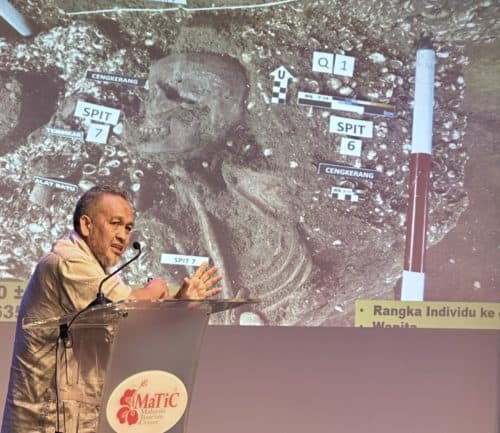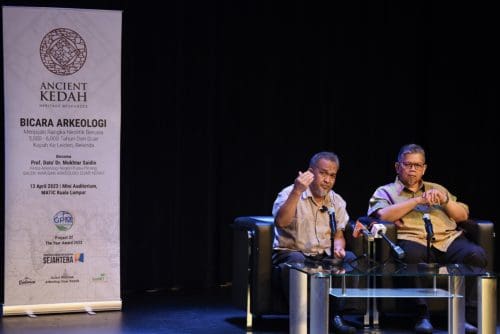THE 41 prehistoric skeletons, which were discovered from three shell middens in Guar Kepah more than a century ago, are set to be brought to Penang next year, upon the completion of the Guar Kepah Archaeological Gallery in Kepala Batas.
The Guar Kepah Archaeological Gallery in Kepala Batas is expected to be completed in January next year.
Between the years 1936 and 1960, these skeletons were brought to the Netherlands and are currently placed at the Collection Centre Netherlands (CCNL) in Amersfoort, Netherlands.
Previously, they were kept at Naturalis Biodiversity Centre (NBC), Leiden.
These 41 skeletons are believed to be the descendants of the Penang woman skeleton that was discovered in April 2017 at Guar Kepah.
Based on research it was found that the Penang woman would have lived during the Neolithic era.

It is learned that the Guar Kepah is the first archaeological site recorded in Malaysia, and it is estimated to be between 5,000 and 6,000 years old.
Prof Datuk Dr Mokhtar Saidin said the Guar Kepah is the only proof of the Neolithic shell midden site in Malaysia which is significant.
“It is a symbol of diverse cultures and the country’s prehistoric adaptation. It serves as the burial ground for them.
“There are many other Neolithic sites in Malaysia, such as the Gua Harimau, Lenggong in Perak, Gua Niah in Sarawak, and Bukit Tengorak in Sabah.

“However, as for the Neolithic site of the shell midden type, there is only one in the country, which is in Guar Kepah, Kepala Batas in Penang,” Mokhtar said during an archaeology discussion session with the media on April 13 at Malaysia Tourism Centre (Matic).
Mokthar said in 2021, the Netherlands government had sent out information all over the world stating that it wants to return the artifacts to the original country.
In March, Mokthar joined the special delegation from Penang, led by Deputy Chief Minister II Prof Dr P. Ramasamy, to visit the Netherlands to check on the 41 skeletons as well as to discuss the matters about the repatriation process of the skeletons.
Also joining the special delegation were Malaysian Ambassador to the Netherlands Datuk Nadzirah Osman, Penang Tourism and Creative Economy Committee chairman Yeoh Soon Hin, Chief Minister Incorporated (CMI) deputy general manager Datin Bharathi Suppiah and state Communications Division director and Chief Minister’s press secretary Yap Lee Ying.
“The 41 skeletons are kept in four boxes, and they are in good condition.
“These skeletons comprised the parts such as skulls, teeth, and bones of individuals of different age groups such as adults, teenagers, and kids.
“The Netherlands government has agreed to keep the artifacts until our gallery gets completed,” he added.
Mokhtar also added that in May 2018 an archaeology unit was formed under the Chief Minister’s office.
Story by Tanushalini Moroter
Pix by Muhamad Amir Irsyad Omar

